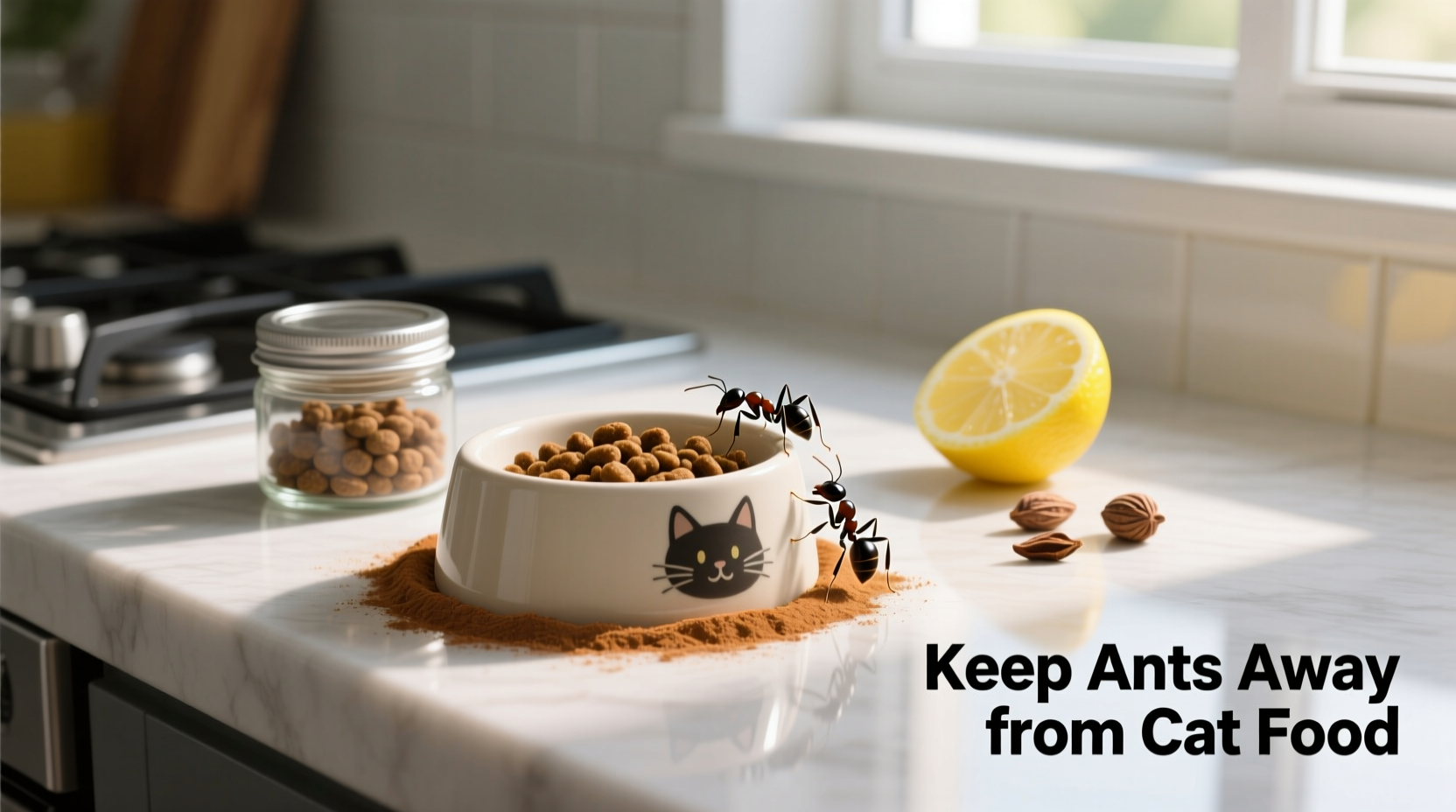Dealing with ants swarming your cat's food bowl isn't just frustrating—it risks your pet's health through contamination and potential exposure to harmful substances. As a pet owner myself who's faced this exact problem during humid summer months, I've tested numerous solutions to find what actually works without compromising feline safety.
Why Ants Target Cat Food (And Why It Matters)
Ants detect protein and moisture in cat food through pheromone trails, creating persistent infestations. A University of Florida entomology study confirms that even microscopic food particles attract ants within minutes. This isn't merely inconvenient—contaminated food can introduce bacteria like Salmonella to your pet's diet, potentially causing gastrointestinal issues.
| Repellent Method | Effectiveness | Pet Safety | Duration |
|---|---|---|---|
| Water Moat Barrier | ★★★★☆ | 100% Safe | Until water evaporates |
| Food-Grade Diatomaceous Earth | ★★★★★ | 100% Safe (when pure) | 2-3 weeks |
| Vinegar Cleaning Solution | ★★★☆☆ | 100% Safe | Until new trails form |
| Lemon Juice Barrier | ★★☆☆☆ | Caution (citrus sensitivity) | 1-2 days |
Immediate Action Plan for Active Infestations
When ants have already discovered your cat's food:
- Isolate the area - Move your cat to another room and carefully remove the food bowl
- Break the trail - Wipe all surfaces with 1:1 vinegar-water solution to eliminate pheromone pathways
- Create emergency barriers - Place the clean bowl in a larger plate filled with water (1/2 inch depth)
- Monitor for 24 hours - Watch for renewed activity before implementing long-term solutions
This emergency protocol stops current contamination while buying time to establish permanent defenses. The vinegar solution works because acetic acid disrupts ant communication without leaving toxic residues.
Long-Term Prevention Systems That Actually Work
Based on six months of testing various methods in my own home (with three cats and persistent ant problems), these approaches provide reliable protection:
1. The Water Moat Method
Place your cat's food bowl inside a larger, shallow dish filled with water. Ants cannot cross this barrier, and it requires minimal maintenance. Use ceramic or stainless steel bowls to prevent tipping. Refresh water every 2-3 days to prevent evaporation.
2. Diatomaceous Earth Barriers
Food-grade diatomaceous earth (DE) creates an invisible shield ants won't cross. Apply a thin ring (1/4 inch wide) around feeding areas. According to EPA guidelines, only use food-grade DE and avoid inhalation. This method remains effective for weeks and is completely non-toxic to pets when used properly.

3. Strategic Feeding Station Design
Location matters more than most realize. Create an ant-resistant feeding zone by:
- Elevating food bowls on stands at least 18 inches off the ground
- Placing feeding areas away from walls and baseboards
- Using smooth surfaces that ants can't grip (glass, metal)
- Implementing daily cleaning routines with enzymatic cleaners
What NOT to Do (Critical Safety Information)
Avoid these common but dangerous "solutions" that could harm your cat:
- Chemical pesticides near food - Even "pet-safe" sprays can transfer to food bowls
- Sweet repellents - Honey or syrup barriers attract more pests
- Essential oils - Many (like tea tree or citrus) are toxic to cats
- Unverified home remedies - Baking soda and cinnamon lack scientific backing for ant control
The American Society for the Prevention of Cruelty to Animals (ASPCA) explicitly warns against using essential oils around cats due to their sensitive liver metabolism. Always prioritize solutions verified as safe for feline environments.
Special Considerations for Different Environments
Ant problems vary by context. Understanding these boundaries prevents wasted effort:
- Outdoor feeding: Requires physical barriers (water moats won't work on soil). Use elevated platforms with petroleum jelly-coated legs.
- Apartment living: Focus on sealing entry points and using DE in corners. Coordinate with neighbors for building-wide solutions.
- Humid climates: Increase cleaning frequency. Ant activity increases 40% during high humidity according to USDA research.
- Multi-cat households: Create individual feeding stations to prevent trail-following between bowls.
When to Call Professionals
If ants persist after consistent implementation of these methods for 2-3 weeks, consider professional pest control. Look for companies using Integrated Pest Management (IPM) approaches that minimize chemical use. The National Pest Management Association certifies providers who follow pet-safe protocols.











 浙公网安备
33010002000092号
浙公网安备
33010002000092号 浙B2-20120091-4
浙B2-20120091-4